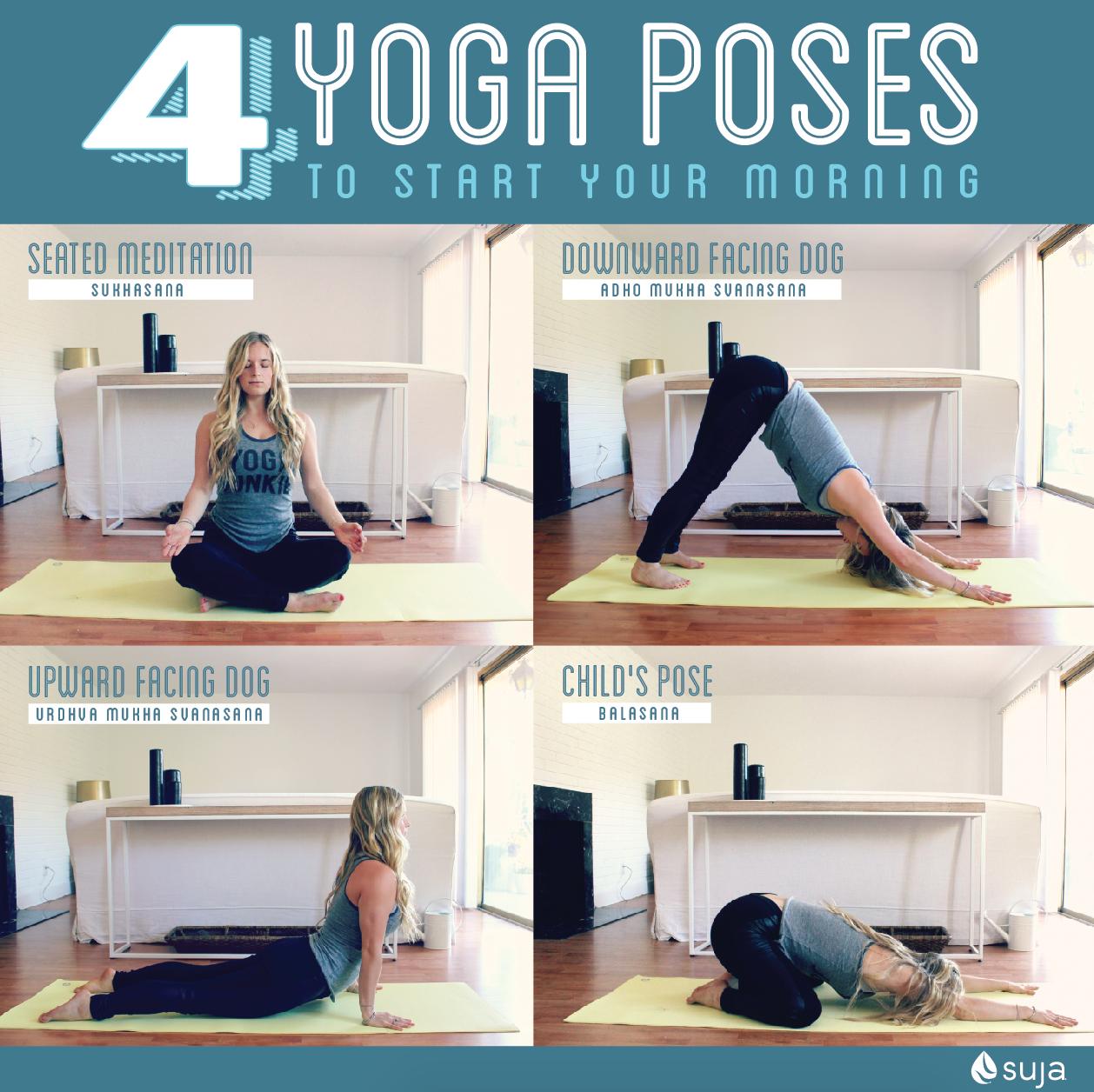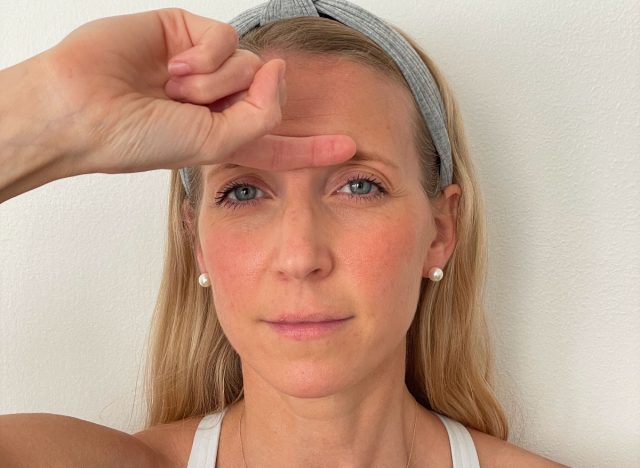
You need to be focused and concentrate when performing inverted poses like the headstand. To avoid injury, a spotter can help guide you. It is better to avoid these poses if your health condition is not yet diagnosed, such as high bloodpressure, neck problems, osteoporosis, or high neck pressure.
To achieve inverted poses, it is best to stand on the ground. A blanket or wall can be used to support you. You can also ask someone to hold your legs while you practice the headstand. This will allow for you to maintain your balance while not putting your head through any strain. A pad can be placed under your head to stop you moving.
Focus on your lower back and keep your legs straight. The best way to do this is to take a few deep breaths. After you take a few breaths, you can lift your left leg to your chest and place your right foot on your chest. After holding the position for 5 seconds, exhale.

Headstands are among the most difficult asanas. If you haven't been practicing yoga for a while, you may find it difficult to stay balanced. It is important to ensure that your head is correctly aligned. You also need to avoid bending your knees or swaying your spine.
It is best to practice the headstand pose to improve your balance. Tri-plane is another option that requires three points. This will increase your core strength and allow you to lift your legs more easily.
There are plenty of different head stand variations. One variation is called the "Salamba Sirsasana I". It combines the base asana and the Salamba Sirsasana I. It is an excellent pose to learn, as it prepares your body and mind for advanced poses. You should practice this pose at least once a week to keep your core strong.
Another pose that helps you strengthen your core is the Sheershasana. The Sheershasana may also be known as Sheer'shasana. It takes core strength to stabilize your shoulders while lifting your legs.

You must remember to breathe. You should also focus on your elbows and your lower back. If you can't balance this well, you may want to start with an easier headstand.
It is important to note that you should not attempt inverted poses if your heart condition or brain tumor are present. These conditions can make it more difficult to balance and could even lead to injury. If you have osteoporosis (or a burst vein in your eye), these inverted positions are best avoided. This is because inverted poses will cause your body to move differently than it normally would.
The head stand is also a good way to practice sex sublimation. It's also a great way to stimulate your pineal gland, which is responsible in producing melatonin as well as other hormones.
FAQ
How does yoga change your body?
Yoga helps you relax and stretch. It can also make you feel great. This is because yoga increases flexibility, strength and decreases stress. This results in better sleep, increased concentration, and more energy.
Yoga improves blood flow and makes it less likely that you will get the flu. This happens because yoga is a deep practice of breathing that increases oxygen flow to your brain.
Yoga can also help with tension and pain. These postures improve posture and strengthen joints and muscles.
Yoga is a great way to stay healthy and happy.
Is yoga safe for everyone?
Yoga is safe and accessible to all ages, genders. Yoga has been practiced over thousands of year without any side effects.
Before you start a new exercise program, make sure to check with your doctor if you have any medical conditions.
How long does it usually take to become an expert in yoga?
It depends on what kind of yoga you're doing. Some styles are faster than other. Even if you are just starting, you can still expect to improve.
The more you practice, your performance will improve. You'll see improvements in just a few short weeks of practice.
What are the health advantages of yoga?
Yoga is an ancient tradition that originated in India. It was developed by Hindu monks over many centuries to improve mental and physical health. Yoga is used by many people for stress relief and relaxation. Some believe that yoga helps build strength and flexibility.
Yoga improves balance, coordination, and is a great exercise option for seniors who want to keep active. It can help to prevent falls or other injuries.
Yoga can be good for your heart, as it strengthens the cardiovascular system. If you are overweight, have high bloodpressure, or have diabetes, yoga can be a great option.
Yoga can also help with stress, anxiety and depression. These conditions can cause chronic pain so it is especially important to practice yoga for those with arthritis and/or fibromyalgia.
As you get older, your muscles naturally lose some elasticity. Yoga helps keep your muscles flexible. Yoga gives you more energy as you age.
According to the National Institute on Aging, regular yoga can reduce depression symptoms such as fatigue and feelings depressed. Yoga can also lower cholesterol levels and increase bone strength, according to the National Institute on Aging.
Yoga can also be used to relieve headaches and back pain. Yoga's slow pace, gentle movements and effectiveness in relieving muscle spasms can be attributed to its effectiveness for strains and muscular spasms.
Statistics
- The people in the yoga group were 37 percent more likely to have quit smoking by the end of the 8-week program. (nccih.nih.gov)
- The American Psychological Association recently shared that 84% of American adults feel the impact of prolonged stress (5). (healthline.com)
- In comparison, a 125-pound person is estimated to burn 135 calories in 30 minutes of walking (at a pace of 15-minute miles) and 210 calories bicycling at a moderate pace on a stationary bike. (everydayhealth.com)
- Gentle yoga has been shown to ease some of the discomforts of tender, swollen joints for people with arthritis, according to a Johns Hopkins review of 11 recent studies. (hopkinsmedicine.org)
- About one in seven U.S. adults practiced yoga in the past 12 months, according to a 2017 national survey. (nccih.nih.gov)
External Links
How To
Can I do yoga during pregnancy?
Some poses may be unsafe if you're pregnant. Before beginning a new exercise routine, it is advisable to consult your doctor.
However, there are many poses you can still do during pregnancy. Here are some tips:
-
Pregnant women shouldn't lift weights above shoulder level. Instead, consider dumbbells or resistance bands that are lightweight.
-
Avoid deep twists, as these could put pressure on your belly.
-
Avoid backbends until after you give birth. This can place excessive strain on the lower back.
-
Don't sit cross-legged or lie down on your stomach until you deliver your baby.
-
If you are not cleared by your doctor to do inverted poses like headstands and handstands, don't try them.
-
You should limit your practice to 30 min per day.
Yoga can be continued during pregnancy, if you're at the right stage. Your doctor will let you know when you are ready for yoga.